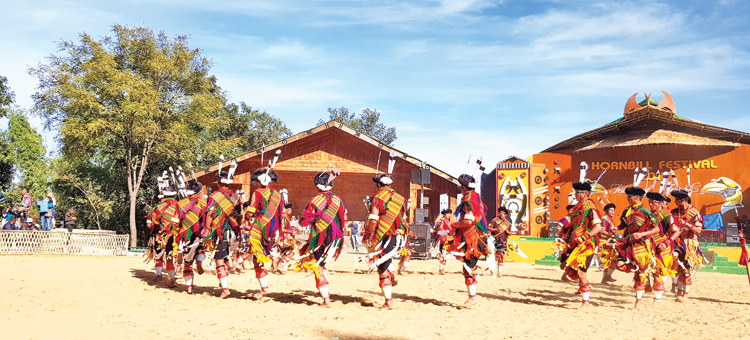Mumbai: Buoyed by its maiden successful appearance at ITB Berlin 2018, tourism, the biggest grosser for Nagaland, is on a roll with the much-tauted annual showpiece tourism event of the state, Hornbill Festival, held in December 2017 becoming a record success.
Tipped as the largest tribal cultural festival in Southeast Asia, it is an annual 10-day feature that takes place from December 1 to 10. The 2017 edition attracted a record 2,43,214 visitors, twice the figure of 2016. Over 2400 foreign tourists, 38,700 domestic and 2,02,113 locals enjoyed the event, which was inaugurated by the President of India.
It has become a big-ticket event not just for the 16 tribes of Nagaland, but also the whole seven northeastern states to showcase the best of their cultural elements. The festival is an ideal platform for tourists to get a glimpse of the seven-sister states of India.
“This is our first time at ITB which offers insights into how prime destinations are marketing themselves globally. Tourism has immense potential in Nagaland” – Angau I Thou IAS, Commissioner & Secretary, Department of Tourism
Angua I Thou IAS, Commissioner & Secretary, Department of Tourism, said, “We are a paradise yet to be discovered by the world, and even India. Ministry of Tourism has sanctioned funds to the tune of Rs. 200 crore under the Swadesh Darshan Scheme for two tribal circuits. We are focusing on infrastructure development to make the destinations tourism friendly.”
Six districts are covered under Swadesh Darshan scheme. Phase 1 is almost complete and we hope to inaugurate it in April. We have asked India Tourism to request the Prime Minister to inaugurate the projects.”
Sustainable Tourism
“In Nagaland, we promote only Sustainable Tourism, which is inclusive of the 16 Naga tribes. We are building huts for them so they can come and live and participate in this economic activity and nurture their ethnic culture. We are trying to integrate tribes into tourism. We feel it is a good source of income that can sustain tribal culture.”
Hospitality is an intrinsic part of Naga culture and the department is busy drawing up plans to encourage home stays for tourists so that they can experience the rustic culture first-hand and enjoy local cuisine. Apart from Dimapur and Kohima, classified hotels are a rarity in Nagaland. Connectivity is by and large through rail, however, there are flights to Dimapur from Guwahati and New Delhi. Some parts of Nagaland can be easily accessed from Assam by road. “In three years we plan to ring in major overhaul to the road infrastructure.”
Foreign tourist arrivals to Nagaland mostly centre around adventure activties and to experience the village life. “Most families and groups come here to enjoy ecotourism, adventure and culture. Contrary to general perception, Nagaland is a peaceful state, and has been so for many years.”
Swadesh Darshan scheme
Tribal Circuit I: Peren-Kohima-Wokha;
Sanctioned: Rs. 97.36 crore in 2015
Tribal Circuit II: Mokokchung-Tuensang- Mon; Sanctioned: Rs. 99.67 crore in 2016





